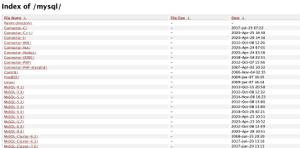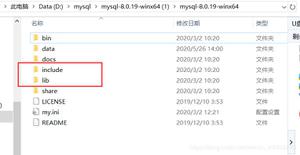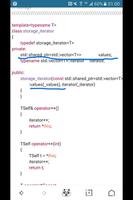mysql学习笔记二DQL

-- 查询编号为1004的学生的姓名和生日 select name,birthday from student where id=1004;
-- 查询年龄大于18的学生信息
select * from student where age>18;
-- 查询小明的成绩
select name,score from student where name="小明";
-- 查询年龄在18到20之间的所有学生
select * from student where age>18 and age<20;
select * from student where age between 18 and 20;
-- 查询除了1003外的所有学生信息
select * from student where id != 1003;
select * from student where id <> 1003;
-- 查询编号为1005或者年龄为18的学生信息
select * from student where id=1005 or age=18;
-- 查询编号为1003和编号为1005的学生信息
select * from student where id=1003 and id=1005;
select * from student where id in(1003,1005);
-- 查询编号不是1003和1005的学生信息
select * from student where id not in(1003,1005);
-- 查询所有姓张的学生信息, 可以使用like关键字进行模糊查询
--like关键字需要配合通配符使用
--通配符有两个: %(任意个任意字符), _(任意一个字符)
select * from student where name like "张%";
-- 查询名字中带国的学生信息
select * from student where name like "%国%";
-- 查询名字第二个字符为明的学生信息
select * from student where name like "_明%";
-- 查询缺考学生的信息, score没有值, 不是为0
select * from student where score is null;
-- 查询没有缺考的学生信息
select * from student where score is not null;
select * from student where not score is null;
2.select子句
select子句的作用是选择要查询的列,还包括以下功能:
- 可以在select子句中进行运算;
- 可以用distinct过滤重复的行数据;
- 可以给列起别名。
-- 运算 -- null不参与运算, 结果都是null
select name,score,scoer+10 from student;
-- 可以给列定义别名, 使用as关键字, 可以省略
-- 别名最好不要出现特殊字符, 中文也不建议使用
select name, score, score+10 as new_score from student;
select name, score, score+10 new_score from student;
select name, score, score+10 "成绩" from student;
-- ifnull函数,类似于java中的三目运算符,用于处理空值null,如果某个字段为null,则使用给定的值进行替换
select name, score, IFNULL(score,0)+10 new_score from student;
-- 查询所有学生的年龄
select distinct age from student;
3.排序
使用order by子句可以进行结果的排序,需要配合两个关键字一起使用:
ASC ,升序 ,ascending ( 默认值 )
DESC ,降序 , descending 。
--查询所有学生信息,按照id进行升序排序 select * from student order by id asc;
--查看年龄为20的学生信息,按照id降序排序
select * from student order by id desc;
--可以按照别名进行排序
--查询所有学生的新成绩,并按照新成绩排名
select name,score+10 new_score from student order by new_score desc;
--order by 后可以写数字,代表第几列(一般不用)
select * from student order by 6;
--rand()函数,生成随机数,范围是[0,1)
--配合rand函数可以进行数据的随机排序,打乱数据,洗牌.
select * from student order by rand();
--查询所有学生的信息,按照年龄降序排序,如果年龄相同,再按照id降序排序
select * from student order by age desc,id desc;
4.分组函数
分组函数用于对查询结果进行统计,共有5个,返回结果是一个值。count() ,sum(),max(),min(),avg()。
--分组函数使用时,null值不进行统计--统计所有学生的人数
select count(*) from student;
select count(id) from student;
--查询总分,最低分数和最高分数及平均分数
select sum(score),min(score),max(score),avg(score) from student;
5.分组查询
分组查询使用group by子句实现,分组查询后需要注意以下几点:
1.select子句只能查询分组字段和分组函数。
2.可以使用where在分组前条件过滤。
3.可以使用having在分组后进行条件过滤。
-- 按照性别进行分组, 分别统计男女同学的人数和平均成绩 select gender,count(*) cnt,avg(score) avg_score from student group by gender;
-- 按照性别进行分组,分别统计男女同学的人数和平均成绩,排除成绩低于70的学生信息
select gender,count(*) cnt,avg(score) avg_score from student where score>=70 group by gender;
-- 按照年龄进行分组,分别统计不同年龄同学的人数和平均成绩,排除人数小于2的分组信息
-- where和having的区别在于where中无法使用分组函数,而having中可以使用
select age, count(*) cnt, avg(score) avg_score from student group by age having count(*)>=2;
select age, count(*) cnt, avg(score) avg_score from student group by age having cnt>=2;
6.分页查询
MySQL中,可以通过limit关键词实现分页查询,limit是MySQL的特有语法,limit后面需要跟两个参数,第一个参数是查询的起始索引(从0开始),第二个参数是查询的记录数,limit必须出现在SQL的末尾。
--每页显示两条学生信息,完成分页显示--page:第几页
--size:每页显示几条数据
select * from student order by id limit (page-1) * size, size;
--第一页
select * from student order by id limit 0,2;
--第二页
select * from student order by id limit 2,2;
--第三页
select * from student order by id limit 4,2;
以上是 mysql学习笔记二DQL 的全部内容, 来源链接: utcz.com/z/532176.html









